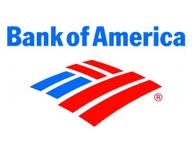Ten bucks says that if you jumped in your car and drove within a five-mile radius of a suburban area, you would pass at least 10 bank branches. These old vestiges of how banking was done saturate the nation’s landscape — and banks are trying to figure out the best way to address the overpopulation. While some choose to sell off excess locations, others are testing new options or entirely new configurations.
How we got here in the first place

The financial crisis compounded the issue of too many bank branches to a certain degree as acquisitions and mergers created redundant locations for the same bank. And since bank branches are so prevalent and often acceptable store fronts for metropolitan areas, a new issue has arisen: Some jurisdictions want to cut back on their presence. In fact, bank locations have taken up so much of the retail and business real estate in New York’s Upper East Side that the city passed a new zoning ordinance that would restrict any more branches from opening up.
And now that mobile and online banking account for the majority of transactions by bank customers, the necessity of numerous branches is declining while costs are increasing on a transactional basis. So it makes sense for the banks to look for ways to reduce their branch numbers in order to increase savings. Bank of America Corp (NYSE:BAC) for instance has found that more than half of all the deposit transactions performed by customers are completed at one of the bank’s thousands of ATMs, and not at a traditional teller window. The bank sold 193 branches in 2012 alone.
But fear not, dear branch-lover, these old-timey operations are in little danger of mass extinction — for three good reasons.
1. Convenience
If there’s anything that all Americans love, it’s convenience. And banking is no exception. In 2007, the FDIC reported that a convenient branch location was one of the most important factors for customers as they decided where to put their money.
In order to still provide a convenient location for its customers, Wells Fargo & Co (NYSE:WFC) has taken a different approach to the problem of costly branches. The bank opened a test location in Northwest Washington, DC that features advanced ATMs that can perform most bank transactions. There is no conventional teller line and only a couple employees on hand to help with more tricky customer needs. The branch is a trial for Wells Fargo & Co (NYSE:WFC) that, if successful, will familiarize more customers with self-serve options, but it still has its limitations.
And while convenience may also be the No. 1 reason so many bank customers are switching over to online and mobile banking, there is still a large population of people who prefer the option to go in and speak with a banker. Which leads us to reason number…
2. Presence
For national banks like the Big Four, it’s important to let the local residents know that your services are available as a banking option. Branches afford the banks both visibility and the opportunity to display its customer service to potential clients.
Though it’s not inside the U.S., Citigroup Inc (NYSE:C)‘s recent announcement of a new branch location in Iraq is one of the best examples of this important trait of bank branches. As one of the first American firms to reenter the still-unstable country, it may prove to be a big draw for Iraqi customers, which would be good news for Citigroup Inc (NYSE:C) as it enters a new economy that’s expected to grow 9% over the next year.
3. Special functions
One of mobile and online banking’s biggest limitations is the winning ticket for the longevity of bank branches — non-traditional banking functions. For example, Wells Fargo & Co (NYSE:WFC)’s test branch mentioned above is not suited for commercial business customers, but instead is solely focused on individual consumer banking needs.
Of the Big Four banks, JPMorgan Chase & Co. (NYSE:JPM) is bucking the trend of selling locations and has actually been adding to its footprint in the past few years. The bank has increased its online presence like its rivals, but it is also finding a new way to present physical locations to its clients. With the consolidation of its consumer products into one division, the branches offer a location for customers to seek advice from bankers. The company has stated that the main purpose of branches is no longer for making transactions, but instead for asking for advice, focusing more on customers’ needs than on selling products.
Endangered species?
With all of the changes occurring in the banking world, it’s not hard to envision a future without physical bank branches. But that time is still a long way off. Technological advances will continue to favor the self-serve trend, and banks will adopt new options for their tech-savvy customers. In the meantime, though there is less of a need for so many branches, they still play a necessary role in banking.
If you like the old standard of bank branches and tellers, don’t worry that they will disappear from the map entirely. Though the convenience of numerous locations in your area may soon be a thing of the past, bank branches will survive for the foreseeable future.
The article 3 Reasons These Banking Relics Are Still Relevant originally appeared on Fool.com and is written by Jessica Alling.
Fool contributor Jessica Alling has no position in any stocks mentioned. The Motley Fool recommends Bank of America, BofI Holding, and Wells Fargo. The Motley Fool owns shares of Bank of America, BofI Holding, JPMorgan Chase, and Wells Fargo.
Copyright © 1995 – 2013 The Motley Fool, LLC. All rights reserved. The Motley Fool has a disclosure policy.



